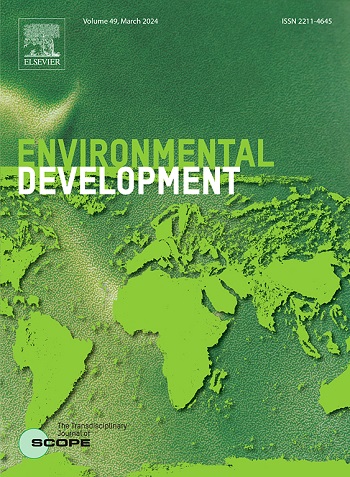A stochastic differential game based pollution management study of regional alliance
IF 5.3
2区 环境科学与生态学
Q2 ENVIRONMENTAL SCIENCES
引用次数: 0
Abstract
The growing complexity of cross-regional pollution poses significant challenges to environmental governance, primarily due to fragmented policy implementation, conflicting interests and dynamic environmental systems. This study addresses these challenges by proposing a regional alliance mechanism that integrates stochastic differential game theory in order to optimise pollution control strategies in an uncertain environment. The primary objective is to develop a dynamic framework that captures the strategic interactions between regions and stochastic environmental factors, such as climate variability and technological advancements. A stochastic differential game model is constructed that incorporates dynamic equations for emission reduction technologies, pollution mitigation efforts and demand responses. Three governance scenarios are analysed: self-sufficiency, a unilateral alliance and a major alliance. Our main findings suggest that forming stable regional alliances significantly improves pollution control efficiency compared to isolated actions. Major alliances achieve the highest profitability due to resource integration and coordinated strategies. Sensitivity analysis reveals the pivotal role of technological effectiveness coefficients and cost parameters in shaping regional decisions. Notably, random factors introduce volatility, emphasising the need for adaptive governance mechanisms. Based on these insights, policy recommendations include fostering regional alliances through legal and financial incentives, prioritising green technology R&D, and establishing dynamic monitoring systems to balance economic and environmental outcomes. This research provides a novel methodological framework for managing transboundary pollution, offering actionable strategies for achieving sustainable development goals.
基于随机微分对策的区域联盟污染管理研究
日益复杂的跨区域污染对环境治理提出了重大挑战,主要是由于政策执行的碎片化、利益冲突和动态的环境系统。本研究提出了一种整合随机微分博弈论的区域联盟机制,以便在不确定环境中优化污染控制策略,从而解决了这些挑战。主要目标是建立一个动态框架,捕捉区域与随机环境因素(如气候变率和技术进步)之间的战略相互作用。构建了一个随机微分博弈模型,该模型包含了减排技术、缓解污染努力和需求响应的动态方程。分析了三种治理情景:自给自足、单边联盟和主要联盟。我们的主要研究结果表明,与孤立行动相比,形成稳定的区域联盟显著提高了污染控制效率。大联盟通过资源整合和战略协调实现最高的盈利能力。敏感性分析揭示了技术有效性系数和成本参数在区域决策中的关键作用。值得注意的是,随机因素引入了波动性,强调了对适应性治理机制的需求。基于这些见解,政策建议包括通过法律和财政激励促进区域联盟,优先考虑绿色技术研发,建立动态监测系统以平衡经济和环境成果。这项研究为管理跨界污染提供了一个新的方法框架,为实现可持续发展目标提供了可行的战略。
本文章由计算机程序翻译,如有差异,请以英文原文为准。
求助全文
约1分钟内获得全文
求助全文
来源期刊

Environmental Development
Social Sciences-Geography, Planning and Development
CiteScore
8.40
自引率
1.90%
发文量
62
审稿时长
74 days
期刊介绍:
Environmental Development provides a future oriented, pro-active, authoritative source of information and learning for researchers, postgraduate students, policymakers, and managers, and bridges the gap between fundamental research and the application in management and policy practices. It stimulates the exchange and coupling of traditional scientific knowledge on the environment, with the experiential knowledge among decision makers and other stakeholders and also connects natural sciences and social and behavioral sciences. Environmental Development includes and promotes scientific work from the non-western world, and also strengthens the collaboration between the developed and developing world. Further it links environmental research to broader issues of economic and social-cultural developments, and is intended to shorten the delays between research and publication, while ensuring thorough peer review. Environmental Development also creates a forum for transnational communication, discussion and global action.
Environmental Development is open to a broad range of disciplines and authors. The journal welcomes, in particular, contributions from a younger generation of researchers, and papers expanding the frontiers of environmental sciences, pointing at new directions and innovative answers.
All submissions to Environmental Development are reviewed using the general criteria of quality, originality, precision, importance of topic and insights, clarity of exposition, which are in keeping with the journal''s aims and scope.
 求助内容:
求助内容: 应助结果提醒方式:
应助结果提醒方式:


